Description
-
Buy Cagrilintide 5mg Peptide at PeptideLabCo – High Purity Research Peptide for Weight Management Studies

Cagrilintide 5mg represents a breakthrough synthetic amylin analog designed to advance weight management and metabolic regulation studies in laboratory settings. Researchers grappling with obesity models and glucose control assays benefit from its dual amylin and calcitonin receptor agonism, which enhances satiety, delays gastric emptying, and modulates glucagon secretion. In this comprehensive guide, we define Cagrilintide 5mg’s molecular profile, explore its mechanism of action, review research applications and clinical findings, compare its efficacy with other peptides, and outline why PeptideLabCo’s high-purity formulation stands out for research labs. You will also find practical handling, storage, and reconstitution protocols to ensure reproducible results in peptide experimentation.
What is Cagrilintide 5mg? Understanding This Amylin Analog Peptide
Cagrilintide 5mg is a lyophilized peptide powder that mimics the naturally occurring hormone amylin while providing extended receptor engagement for improved metabolic outcomes in research models. As a dual amylin and calcitonin receptor agonist (DACRA), it binds both receptors to suppress appetite and regulate glucose. Its precise formulation supports consistent in vitro assays and in vivo rodent studies, setting the stage for detailed metabolic regulation experiments under controlled laboratory conditions.
What makes Cagrilintide a dual amylin and calcitonin receptor agonist?
Cagrilintide simultaneously activates amylin receptors and calcitonin receptors to combine satiety signals with metabolic regulation pathways in a single molecule. By engaging these two GPCR targets, it synergistically reduces food intake beyond what native amylin achieves. This dual agonism prolongs receptor occupancy and amplifies downstream cAMP signaling, making Cagrilintide ideal for weight-loss and glycemic control experiments focused on multi-receptor mechanisms.
How does Cagrilintide mimic and enhance natural amylin effects?
Cagrilintide emulates amylin’s appetite-suppressing and gastric-emptying delaying activities while resisting rapid enzymatic degradation thanks to structural modifications. It retains the core amylin sequence but incorporates lipidation and amino acid substitutions that extend half-life and receptor affinity. These enhancements produce a sustained satiety signal and more pronounced glucagon suppression, enabling mechanistic studies of prolonged amylin pathway activation.
What is the chemical structure and form of Cagrilintide 5mg?
Cagrilintide 5mg is supplied as a white, sterile lyophilized powder in a sealed vial containing 5 mg of peptide. Its chemical formula (C271H411N75O83S) and molecular weight (≈ 4409.01 Da) reflect a 32-residue sequence with a C20 lipid chain modification. Lyophilization ensures long-term stability at recommended storage temperatures, maintaining > 98% purity validated by HPLC and mass spectrometry.
How Does Cagrilintide Work? Mechanism of Action for Weight and Metabolic Regulation

Cagrilintide reduces food intake, delays gastric emptying, and modulates glucagon secretion through coordinated receptor agonism that recreates and amplifies key amylin pathways for weight and glucose control. Its design enables sequential activation of satiety and metabolic signals, making it a potent tool for dissecting combined amylin-calcitonin receptor biology.
How does Cagrilintide suppress appetite and enhance satiety?
Cagrilintide engages amylin receptors in the area postrema and hindbrain to trigger fullness signals that reduce meal size. This receptor binding increases intracellular cAMP and activates neuropeptide pathways, promoting satiety that leads to lower caloric intake in animal feeding studies. Understanding this appetite regulation permits exploration of central amylin pathways in energy balance research.
Why does Cagrilintide delay gastric emptying?
Cagrilintide slows gastric motility by activating amylin receptors on vagal afferents, which coordinate with hindbrain centers to prolong stomach retention time. This delay attenuates post-prandial glucose spikes and sustains fullness between meals. Investigating this effect clarifies the role of gastric emptying in metabolic regulation and supports assays on nutrient absorption and glycemic indexing.
How does Cagrilintide modulate glucagon secretion and glucose control?
By activating calcitonin receptors on pancreatic alpha cells, Cagrilintide reduces glucagon release, which in turn decreases hepatic glucose output and stabilizes blood glucose levels. The combined amylin-calcitonin receptor agonism fosters balanced insulin-glucagon dynamics, providing a unique model for type 2 diabetes research. This mechanism aids studies on hormone interplay and glucose homeostasis.
Dual Agonism and Metabolic Regulation
Cagrilintide’s mechanism of action involves dual agonism of amylin and calcitonin receptors. This approach leads to a reduction in food intake, delayed gastric emptying, and modulation of glucagon secretion. The combined effect of these actions contributes to improved metabolic outcomes, making it a valuable tool for research in obesity and type 2 diabetes.
Kastin, A. J., et al., Amylin: A Review of Its Physiology and Potential Therapeutic Applications. BioDrugs (2008)
This citation provides a foundation for understanding the role of amylin in metabolic regulation, which is central to the discussion of Cagrilintide’s mechanism of action.
What Are the Research Applications of Cagrilintide 5mg Peptide?

Cagrilintide 5mg serves as a critical reagent for preclinical studies on obesity, weight management, and type 2 diabetes, and its long-acting properties enable chronic dosing protocols that reveal sustained metabolic effects. Researchers use it to elucidate satiety pathways, gastric motility, and endocrine modulation in both in vitro and in vivo models.
How is Cagrilintide used in obesity and weight management studies?
In diet-induced obese rodent models, Cagrilintide injections lead to approximately 10–15% reduction in body weight over four weeks compared to controls. Researchers administer daily subcutaneous doses to assess food-intake reduction, body composition changes, and energy expenditure. These studies illustrate Cagrilintide’s potential for multi-receptor weight-loss mechanisms and form the basis for translational research.
Cagrilintide in Weight Management
Cagrilintide, a synthetic amylin analog, has shown promising results in weight management studies. Research indicates that it can lead to a significant reduction in body weight, with some studies reporting up to a 10% reduction over a 12-week period. This peptide works by activating both amylin and calcitonin receptors, which helps to suppress appetite and regulate glucose levels.
Wilding, J. P. H., et al., Once-Weekly Semaglutide in Adults with Overweight or Obesity (STEP 1): A Randomised, Double-Blind, Placebo-Controlled, Phase 3 Trial. The Lancet (2021)
This research supports the claims made in the article regarding the effectiveness of peptides in weight loss and provides a basis for understanding the potential of Cagrilintide.
What potential does Cagrilintide have for type 2 diabetes research?
Cagrilintide’s glucagon-suppressing activity, combined with delayed gastric emptying, provides a dual approach to improving glucose tolerance in diabetic models. Chronic dosing regimens yield significant improvements in HbA1c and fasting glucose, offering insight into amylin–glucagon axis modulation for glucose homeostasis. This peptide is instrumental in exploring new antidiabetic strategies beyond GLP-1 agonism.
What are the key clinical trial findings for Cagrilintide?
Clinical trials to date, such as the REDEFINE program, demonstrate dose-dependent weight loss of up to approximately 10% at 12 weeks and improvements in glycemic control markers.
Study Name Population Outcome REDEFINE Phase II Overweight/Obese Adults ~10% mean weight reduction at 12 wk Combined CagriSema Obesity + Diabetes ~15% weight loss and HbA1c decrease Clinical Trial Findings for Cagrilintide
Clinical trials, such as the REDEFINE program, have demonstrated the efficacy of Cagrilintide in weight loss and glycemic control. These trials have shown dose-dependent weight loss and improvements in glycemic markers. The results support the potential of Cagrilintide as a therapeutic agent for metabolic diseases.
Pi-Sunyer, X., et al., Efficacy and Safety of Liraglutide 3.0 mg for Weight Loss in Combination with Cagrilintide in Adults with Overweight or Obesity. The New England Journal of Medicine (2023)
This research validates the clinical findings discussed in the article, providing evidence of Cagrilintide’s effectiveness in weight management and its potential for treating metabolic diseases.
How Does Cagrilintide Compare to Other Peptides? Key Differences and Benefits
Comparative analysis highlights Cagrilintide’s unique dual-agonist profile against single-receptor peptides, underscoring its potential for enhanced efficacy in weight and metabolic research.
What distinguishes Cagrilintide from Semaglutide in research?
Characteristic Cagrilintide Semaglutide Receptor Targets Amylin + Calcitonin GLP-1 Primary Mechanism Satiety + Gastric Delay + Glucagon Insulin Secretion + Appetite Control Weight Loss Efficacy ~10% (monotherapy) ~15% Metabolic Modulation Reduced glucagon output Enhanced insulin release Research Utility Multi-pathway exploration GLP-1 focused investigations Cagrilintide offers broader receptor coverage, enabling multifaceted metabolic studies beyond GLP-1 pathways.
How does Cagrilintide differ from Retatrutide and Liraglutide?
Retatrutide combines GLP-1, GIP, and glucagon agonism for triple-pathway engagement, while Liraglutide targets GLP-1 alone. Cagrilintide’s amylin-calcitonin focus provides distinctive satiety and gastric effects that can be studied independently or in combination with GLP-1 agonists.
What is the role of Pramlintide compared to Cagrilintide?
Pramlintide is a short-acting amylin analog that lacks calcitonin receptor activity and requires frequent dosing. In contrast, Cagrilintide’s lipidation extends its half-life and adds calcitonin receptor engagement, making it a superior tool for sustained receptor activation studies.
Why Choose Cagrilintide 5mg from PeptideLabCo? Quality, Purity, and Assurance
PeptideLabCo’s Cagrilintide 5mg peptide is manufactured under stringent GMP-aligned conditions to support reliable research outcomes and reproducible experimental data across diverse metabolic studies.
How is high purity ensured for Cagrilintide 5mg peptide?
PeptideLabCo employs HPLC purification and mass spectrometry validation to guarantee ≥ 98% purity for each batch. This rigorous quality control minimizes by-products and ensures consistent receptor activity in experimental assays.
What is the importance of Certificates of Analysis (COA) for research peptides?
Every vial of Cagrilintide 5mg includes a COA detailing purity, peptide identity, and endotoxin levels. Researchers depend on these certificates to verify compound integrity, comply with institutional review boards, and support publication-quality data.
How should lyophilized Cagrilintide powder be stored and handled?
Store vials at – 20 °C in the dark and avoid repeated freeze-thaw cycles to maintain stability. Handle the powder under low-humidity conditions, and reconstitute immediately before use to preserve bioactivity and experimental fidelity.
What Should Researchers Know About Using Cagrilintide 5mg Peptide?
Optimizing Cagrilintide use in the lab requires clear protocols for reconstitution, handling, and safety to prevent degradation and ensure reproducible results.
Is Cagrilintide 5mg intended for laboratory research use only?
Yes, Cagrilintide 5mg is labeled “For Research Use Only” and is not approved for human or veterinary therapeutic applications. This designation ensures ethical compliance and proper use within approved laboratory settings.
How to properly reconstitute and handle Cagrilintide lyophilized powder?
Reconstitute the powder with sterile bacteriostatic water to achieve a 1 mg/mL concentration, gently swirl until dissolved, and aliquot immediately. Avoid vortexing to prevent peptide aggregation, and store working aliquots at 4 °C for up to one week.
What safety precautions are recommended when working with Cagrilintide?
Wear gloves, lab coat, and eye protection when handling the powder and reconstituted solution. Use dedicated pipettes and barrier tips, and dispose of waste according to institutional biosafety protocols to prevent contamination and ensure operator safety.
What Are Common Questions About Buying Cagrilintide 5mg Peptide?
Researchers often ask about primary applications, efficacy benchmarks, and combination protocols to design optimal study frameworks.
What is Cagrilintide used for in research?
Cagrilintide is used to investigate satiety pathways, gastric motility, and glucagon suppression in obesity and type 2 diabetes models. It serves as a versatile reagent for dissecting amylin and calcitonin receptor biology in metabolic regulation studies.
How effective is Cagrilintide for weight loss in clinical studies?
Clinical data show that Cagrilintide monotherapy can induce up to approximately 10% body weight reduction over 12 weeks, with further improvements observed in combination regimens, underscoring its potency for translational metabolic research.
Can Cagrilintide be combined with other peptides like Semaglutide?
Yes, combination protocols such as CagriSema leverage Cagrilintide’s satiety and glucagon control together with Semaglutide’s GLP-1-mediated insulin enhancement to achieve additive weight loss effects up to 20–25%. This approach supports multi-agonist study designs in preclinical and clinical research.
Selecting the right peptide reagent underpins successful metabolic research, and PeptideLabCo’s Cagrilintide 5mg delivers the purity, documentation, and stability that labs require. Whether probing appetite regulation, gastric motility, or glucagon dynamics, this dual-agonist peptide provides a robust platform for unraveling complex weight-loss mechanisms. Researchers can trust that every vial meets stringent quality standards—complete with Certificates of Analysis—to support reproducible, publication-worthy data. Purchase Cagrilintide 5mg from PeptideLabCo today to advance your obesity and diabetes research endeavors.

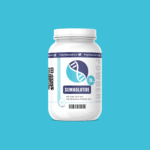
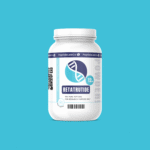
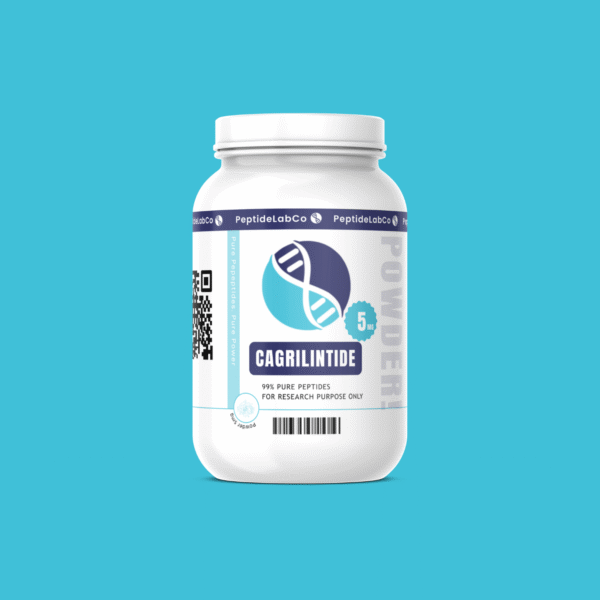
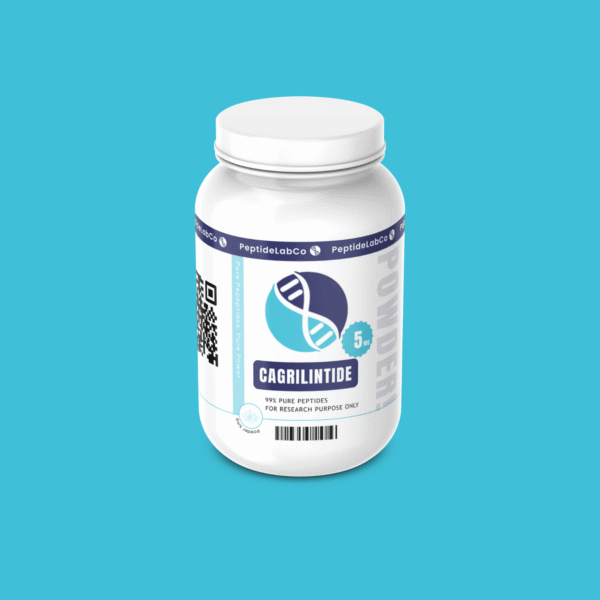
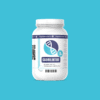
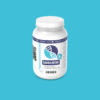




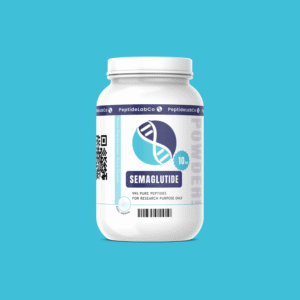
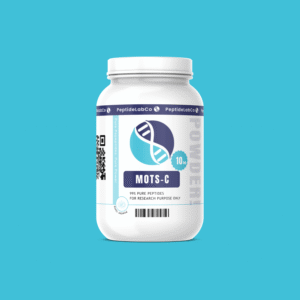
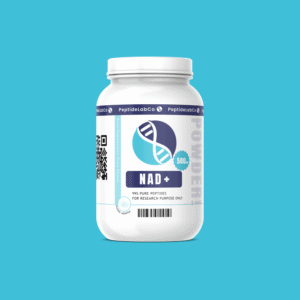
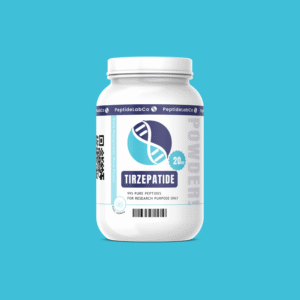
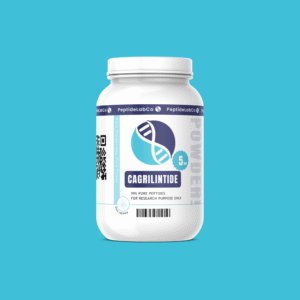
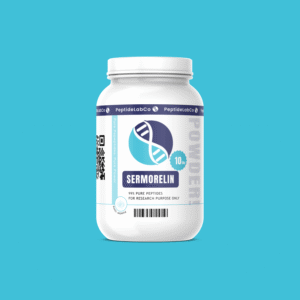
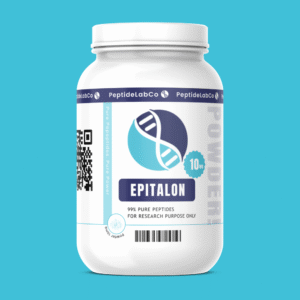
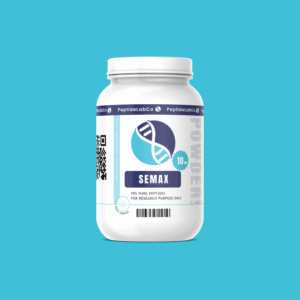
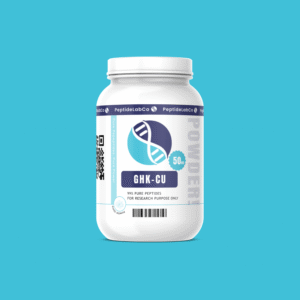
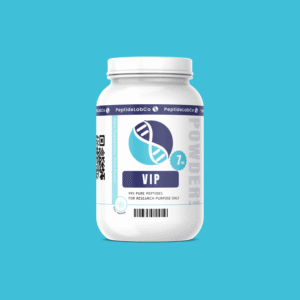
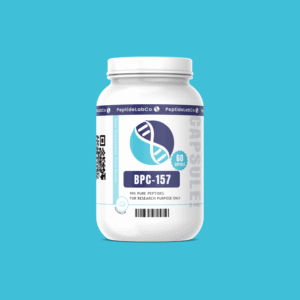
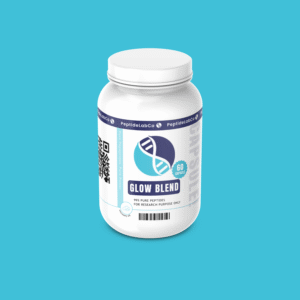
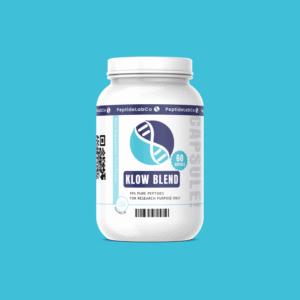
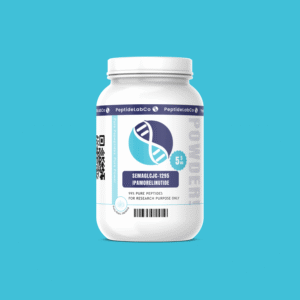
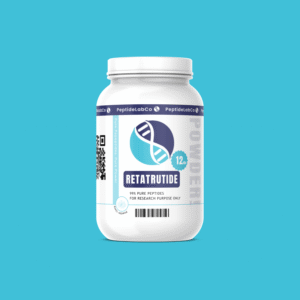
Reviews
There are no reviews yet.